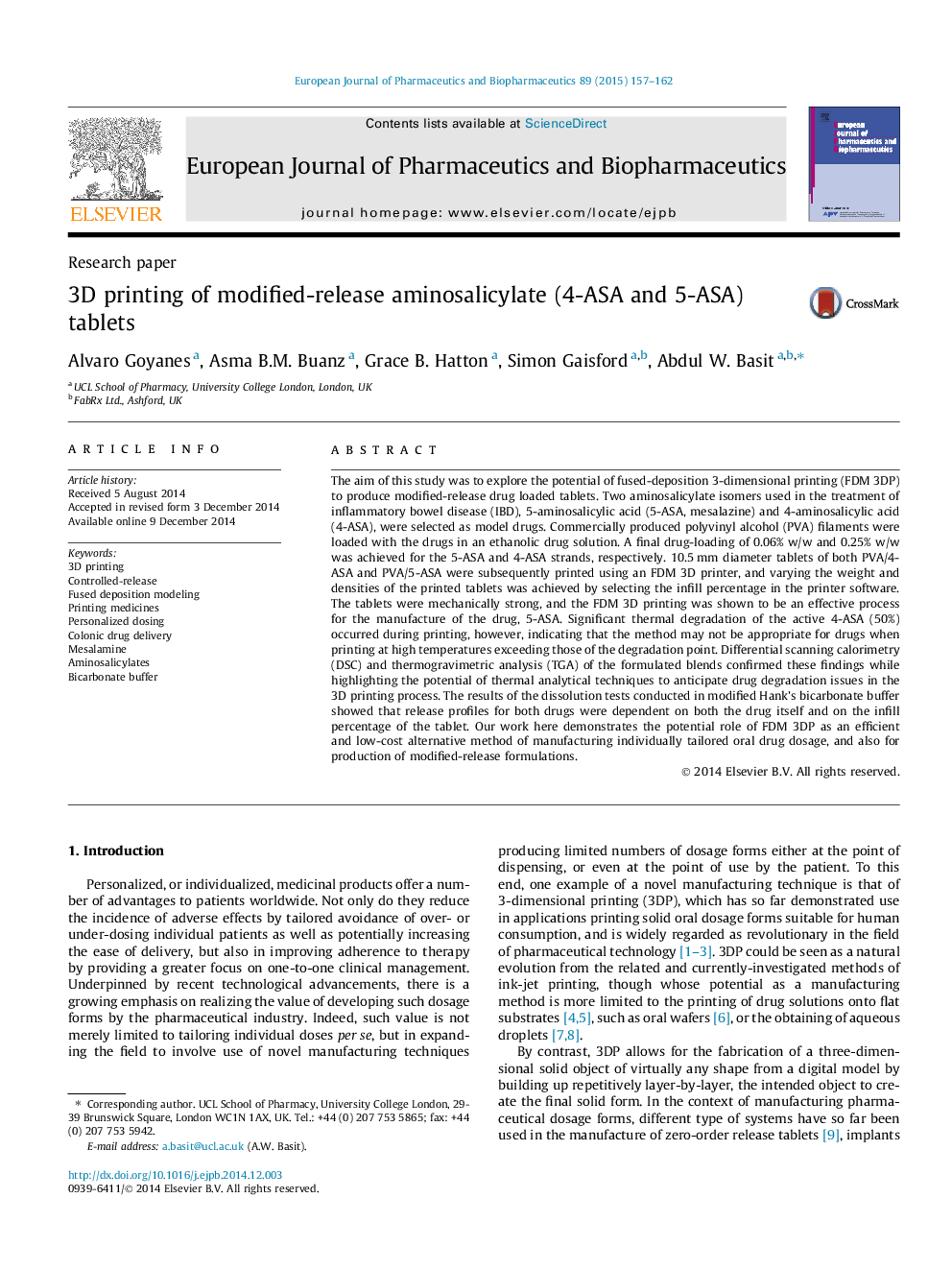| کد مقاله | کد نشریه | سال انتشار | مقاله انگلیسی | نسخه تمام متن |
|---|---|---|---|---|
| 2083435 | 1545336 | 2015 | 6 صفحه PDF | دانلود رایگان |

• Fused-deposition 3D printing to obtain modified-release drug loaded tablets.
• 3D printing is an efficient method of manufacturing personalized dosage forms.
• Drug decomposition temperature is a determining factor in 3D printing.
• Drug release profiles can be modified by selection of the printing parameters.
The aim of this study was to explore the potential of fused-deposition 3-dimensional printing (FDM 3DP) to produce modified-release drug loaded tablets. Two aminosalicylate isomers used in the treatment of inflammatory bowel disease (IBD), 5-aminosalicylic acid (5-ASA, mesalazine) and 4-aminosalicylic acid (4-ASA), were selected as model drugs. Commercially produced polyvinyl alcohol (PVA) filaments were loaded with the drugs in an ethanolic drug solution. A final drug-loading of 0.06% w/w and 0.25% w/w was achieved for the 5-ASA and 4-ASA strands, respectively. 10.5 mm diameter tablets of both PVA/4-ASA and PVA/5-ASA were subsequently printed using an FDM 3D printer, and varying the weight and densities of the printed tablets was achieved by selecting the infill percentage in the printer software. The tablets were mechanically strong, and the FDM 3D printing was shown to be an effective process for the manufacture of the drug, 5-ASA. Significant thermal degradation of the active 4-ASA (50%) occurred during printing, however, indicating that the method may not be appropriate for drugs when printing at high temperatures exceeding those of the degradation point. Differential scanning calorimetry (DSC) and thermogravimetric analysis (TGA) of the formulated blends confirmed these findings while highlighting the potential of thermal analytical techniques to anticipate drug degradation issues in the 3D printing process. The results of the dissolution tests conducted in modified Hank’s bicarbonate buffer showed that release profiles for both drugs were dependent on both the drug itself and on the infill percentage of the tablet. Our work here demonstrates the potential role of FDM 3DP as an efficient and low-cost alternative method of manufacturing individually tailored oral drug dosage, and also for production of modified-release formulations.
Figure optionsDownload high-quality image (121 K)Download as PowerPoint slide
Journal: European Journal of Pharmaceutics and Biopharmaceutics - Volume 89, January 2015, Pages 157–162